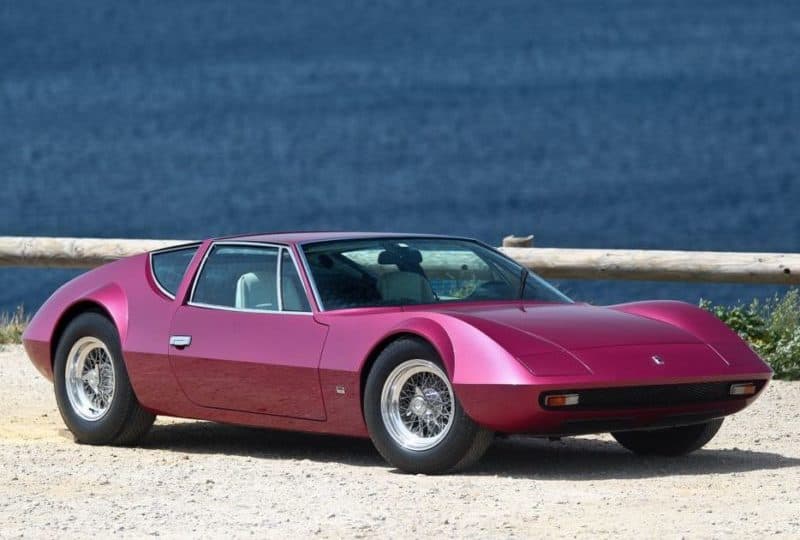What do Italian Cars have that American Automakers just don’t get? We had some experts weigh in on the differences between American cars and their Italian counterparts.
Xtreme Xperience is a supercar driving experience that boasted one of the first Corvette C7 Stingrays available to the public. Yet its customers choose Lamborghinis and Ferraris over the ‘Vette by almost three to one. This is just one example of how, even here in America (Xtreme Xperience stages events at 20 racetracks nationwide), Italian-made cars exude an exotic mystique which domestic marques struggle to match.
“In a nutshell, it comes down to rarity and exclusivity,” said Joe Moore, Chief Marketing Officer and co-founder of Xtreme Xperience. “Ferrari and Lamborghini have always had extremely limited production compared to American cars. Italian cars also have unique design profiles, so they will always stand out in a crowd.”

“The X-factor (of Italian supercars) that seems so elusive stems from the Italian lifestyle and culture,” said Dave Macholz, an Assistant Professor of Automotive Technology at Suffolk County Community College in Selden, New York, citing architecture, cuisine, and opera as examples. “The Italian supercars are embedded in culture. Trying to emulate that feeling without the context of the Italian culture is nearly impossible.”
Bruno Silikowski, designer and developer of private garage community AutoMotorPlex, views this cultural divide in a pan-European context.
“Wine vs. beer; sambuca vs. Wild Turkey; hamburger vs. prosciutto – the Europeans look at life as something to be savored; we look at their lifestyle as exotic,” he mulled. “American cars are generally heavy and go great in a straight line – Europeans tend to build a car that doesn’t slow in the curves.”

In fairness, comparing Italian and American supercars can be the classical “apples and oranges” dilemma, in large part because aspirational cars from Italy tend to cost a lot more than their U.S.-built counterparts. For example, whereas a 2018 Corvette ZR1 starts at $119,995 (MSRP), a corresponding Ferrari 488 GTB will set you back a cool quarter-mil and a similar Lamborghini Huracán closer to an estimated $300k. And that’s comparing the most expensive American sports car with entry to mid-level Italian cars!
“American manufacturers make cars for American consumers who appreciate a good value,” said Moore. “Just look at the [American] Dodge Hellcat’s 707 HP at $81 per horsepower compared to a handmade [Italian] Pagani Huayra’s 720 HP at $2,000 per horsepower!”
But even “true” (i.e. super-expensive) American supercars like the discontinued Saleen S7 (which cost close to $400k) and the Lambo-like SSC Ultimate Aero (which ran $750k in its final, XT version) lack the innate, seemingly inevitable sexiness of their Italian rivals. There’s still something of a generic kit-car air about them – like something plonked over the chassis of an ’87 Fiero rather than a singular, seamless design statement. It’s like comparing Sophia Loren to Megan Fox: one a natural, curvaceous beauty; the other stunning in very different way – self-consciously made-up and with some (allegedly) off-the-shelf parts.
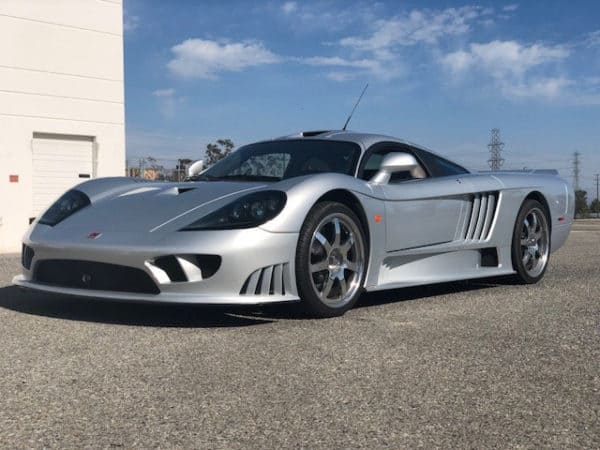
“These American supercars were produced in very limited numbers and are usually Frankensteined together with a chassis from one company, an engine from another, ECU from another and so on,” Moore explained. “This means that parts like tail lights, steering wheels, buttons, knobs, etc. are sourced out of catalogs from companies like Delphi or come from other production cars.”
As Macholz pointed out, based on his recent visit to Museo Ferrari (the Ferrari museum) in Maranello, Italy, that even the Italian cars utilize “stock” (and American!) parts such as AC Delco air conditioning compressors and Delphi switches. Only these tend to be “under the skin” components which don’t dent their lauded aesthetic auras.
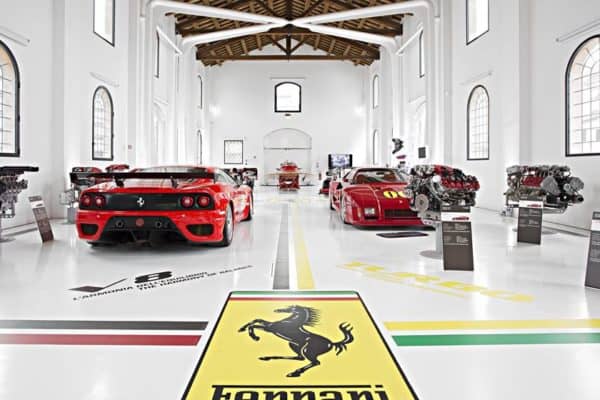
The unique allure of Italian supercars can be broadly attributed to two factors: Italy’s historical emphasis on design (“As far back as the Roman Empire, Italy has a history of designing the world’s most beautiful things… from architecture to furniture and product design to fashion,” said Moore), which has spawned legendary auto designers including Marcello Gandini, Battista Farina, Giorgetto Giugiaro and Franco Scaglione, and design houses such as Bertone, Italdesign and Pininfarina; and an often multi-generational artisanal and apprenticeship-based approach to manufacturing which permeates everything from glass blowing to leather work.
“The [Italian] automotive design houses are not an anomaly unto themselves but rather an extension of the artisan approach,” said Macholz. “These designers are not college grads who majored in a subject area but are rather lifelong artisans who continue a design culture handed down over generations.”

But Italian supercars might want to start looking over their perfectly-proportioned shoulders. The build quality of American-made cars is widely hailed as having dramatically improved since the automotive industry crisis of 2008-10, and U.S. supercar designers have long hinted that they might one day achieve parity with their Italian counterparts.
“American manufacturers are getting better and better at catching up to the Europeans in terms of performance and refinement,” said Mike Rabkin, owner of new car negotiating service From Car to Finish. “But in appealing to the exotic supercar buyer, you need more than that, as part of the appeal is the exotic aura of a product being foreign, even if the vehicle isn’t the best one to own mechanically.”
Ford’s legendary mid-engined GT two-seater – which returned in 2017 after a decade-long hiatus as a $400k, 600-horsepower hand-built head-turner – has long matched the Italians in all departments of “superness”. And SSC’s audaciously-styled, 0-to-60-in-2.5-seconds Tuatara could comfortably wear the badge of an Italian boutique brand (its American designer, Jason Castriota, worked for both Pininfarina and Bertone).
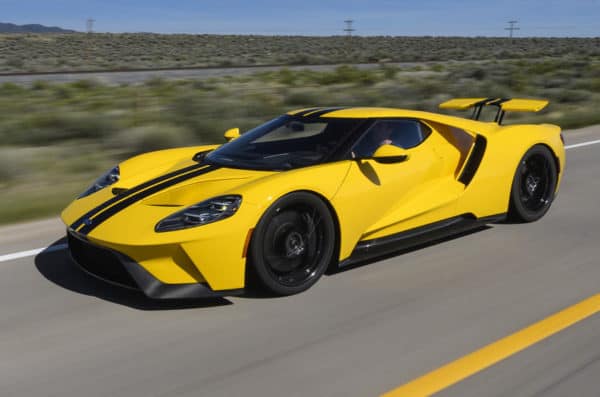
“American manufacturers are getting much better at making performance cars that also look good,” Moore concluded. “One could argue that the interior and exterior design, as well as performance, of the 2006 Ford GT, 2018 Corvette ZR1 and the new Ford GT are on an Italian level.”
Now that engineering, aesthetic, and even cultural differences between American and Italian cars have been closely examined, let’s take a look at some actual examples. Below you’ll find some of the best Italian supercars ever created, while further down the list you’ll be able to see what happens when Italian design gets complemented by a U.S. V8 power (some would argue that this was the best supercar combo back in the day).
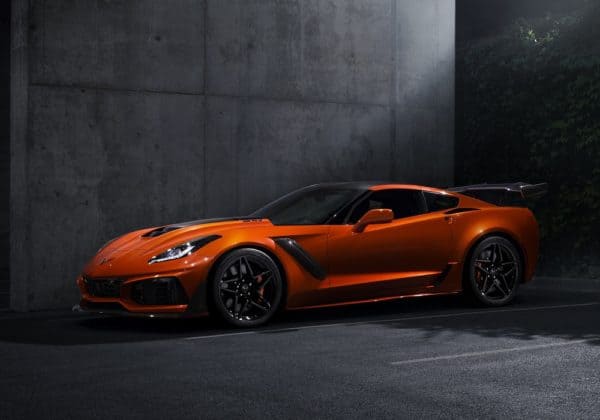
10 of the Best Italian Cars
It comes without saying that Italian sports and supercars are the most exotic and most coveted of them all. Reasons for that have mostly been elaborated above, so without further ado, here are some of the best classic and modern Italian sports and supercars ever devised. Bear in mind that this list could have gone 50 models deep or more with ease.
10. Alfa Romeo 33 Stradale
Derived from the Tipo 33 sports racing car, the Alfa Romeo 33 Stradale represents a road-legal perfection of design, and to some extent, performance (much like the new Alfa Romeo Giulia or most other Alfas over the years). Only 18 of these gorgeous sports cars have been built between late 1967 and early 1969 but what they lack in numbers, they more than make up in class and exclusivity, of course.
The 33 Stradale was the first production vehicle featuring “butterfly doors” while its body was built around a tubular aluminum chassis. Interestingly, almost all 18 cars differed from one another in some minor details like headlights (early versions had twin-headlamps while latter had a single headlamp), position of windshield wipers, and air vents behind the wheels (incorporated with latter models).
Power came from a 2.0L V8 engine which was mostly carried over from the racing prototype. It kept the racer’s flat-plane crank and delivered anywhere between 227 and 254 horsepower depending on serial number and exhaust configuration. Gears were shifted through a 6-speed Colotti transaxle unit.

09. Ferrari Enzo
The Enzo started a revolution in the high-end automotive world by incorporating numerous F1-sourced technologies. You really couldn’t expect anything less from the Maranello company’s halo car for the early 21st century.
Straight from the F1 came the electronically-controlled aerodynamics and electronic ride-height control which the Scuderia was banned from using in the championship. Alongside these revolutionary high-tech performance enhancers also came a high price tag which circulated at around $700,000 during the Enzo’s early days.
Powered by a naturally aspirated 6.0L V12, the Enzo easily developed 651 horsepower, hit 60 mph from a standstill in about 3.1 seconds, and ate quarter mile of pavement in about 11 seconds. Only 400 of them were ever made between 2002 and 2004.
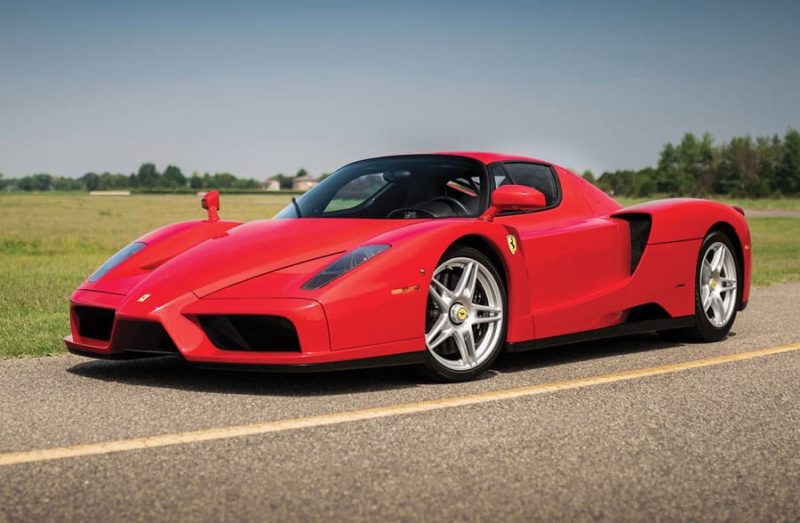
08. Lamborghini Countach
The Lamborghini Countach is considered by many to be the world’s first true supercar. At least in the sense of providing great performance and exotic looks in an altogether impractical package that leaves the driver helpless at times i.e. trying to enter or exit his car while parked alongside a curb, driving in reverse, parking, etc.
Still, the Countach has been Lambo’s poster child for years before it was finally succeeded by the aforementioned Diablo. The supercar was powered by company’s lineup of V12 engines (ranging from 3.9L to 5.2L in displacement) and a 5-speed manual transmission for a total of 434 horsepower in the experimental P400 Jota model for the 3.9L displacement mill and 449 horsepower for the largest 5.2L displacement. Mind you, most Countachs steel employed carburetors with only 66 of the latest LP5000 Quattrovalvole models sporting a Bosch-sourced fuel injection.
The company would produce just shy of 2,000 units over the course of 17 years between 1974 and 1990, with many of them still out there.

07. Bugatti EB 110
Bugatti has practically conquered the supercar world with the Veyron in 2005 and it continues to do so with its successor, the Chiron. Yet, the 1990s Bugatti was an entirely different company than the current Volkswagen subsidiary established just before the turn of the millennium.
Back then, Bugatti was owned by the Italian entrepreneur Romano Artioli who brought the fallen giant back to life after 35 years. Working under this wealthy businessman was like living in a sort of automaker’s utopia according to company’s employees at the time. Maybe that’s why they went under, but in truth it was more likely due to poor economy in main North American, Japanese, and European markets. That and Artioli’s ill-fated purchase of the Lotus brand.
In any case, the Bugatti Automobili S.p.A.’s only product was designed by Marcello Gandini and Giampaolo Benedini, and sported a 553-horsepower (GT) or 603-horsepower (Super Sport) 3.5L quad-turbo V12 mill which was otherworldly at the time. Only 139 examples were produced between 1991 and 1995.
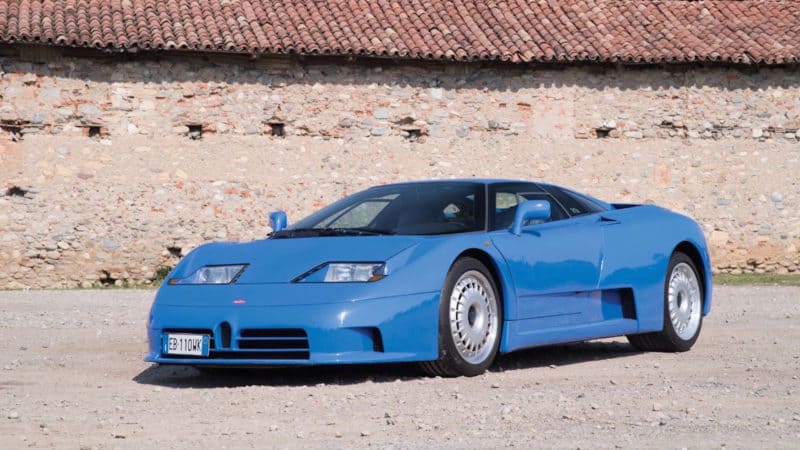
06. Lancia Stratos HF Stradale
The fabled Lancia Stratos is a prime example of a homologation going the right way. The company produced fewer than 500 examples for the general public so that they would be allowed to tackle the World Rally Championship, and tackle it they did! The Stratos smoked the competition in three straight years beginning with 1974.
Designed by Marcello Gandini at Bertone, the Stratos sported an unmistakable wedge shape extremely popular among the supercar designers back in the day, but the Stratos itself was never seen as a supercar per se. The sports car sported the last batch of Ferrari Dino 2.4L V6 engines which developed 188 horsepower. Then again, even that was more than enough considering it weighted only 2,160 pounds.
Boasting a rear-mid engine layout coupled with rear-wheel drive, the Stratos did have a few supercar-worthy properties of its own, though.

05. Ferrari 250 GTO
Only 36 examples were built between 1962 and 1964 but that didn’t stop the 250 GTO from becoming one of the most prized possessions of every Ferrari enthusiast lucky enough to be able to afford one. In fact, one of the best Ferraris ever produced was sold for $70 million in 2018, making it the most expensive car ever sold at an auction.
Not everything was rosy for the 250 GTO back in the day, however. Immediately after winning the FIA’s Group 3 Grand Touring Car category in 1962, 1963, and 1964, the classic Ferrari fell into obscurity after becoming ineligible for further competitions.
The reason behind the 250 GTO’s success were its extremely fun driving dynamics which have a lot to thank to the 3.0L Colombo V12 engine positioned low within the chassis and capable of producing close to 300 horsepower. It’s mesmerizing looks didn’t hurt either, even with a rather spartan interior to boot which clearly testifies about the 250 GTO’s racing pedigree.
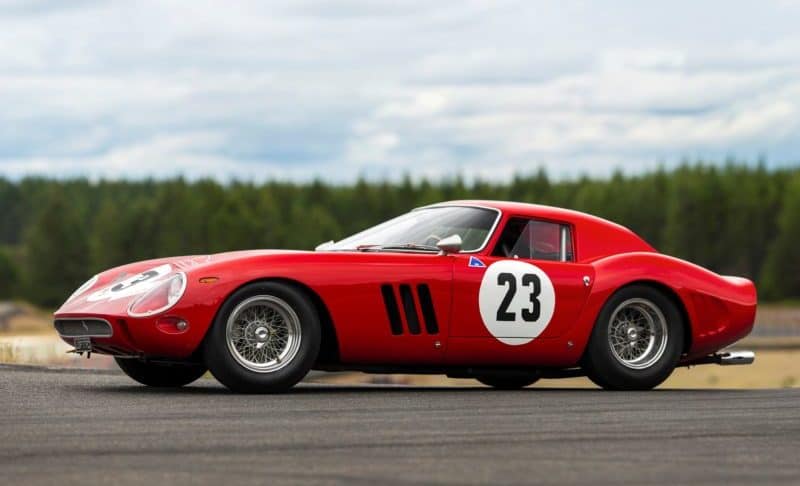
04. Maserati Ghibli Spyder
The Maserati Ghibli is one of the precious few exotic nameplates that’s survived the test of time. While other exotic Italian car manufacturers usually replace their models as soon as they serve their purpose, the name Ghibli has been recurring in the automotive world.
The original Maserati Ghibli from between 1967 and 1973 is arguably the most gorgeous of all three generations of the luxury car. Designed by Giorgetto Giugiaro (during his brief spell at the Carrozzeria Ghia), the Ghibli has remained one of the most beautiful Italian made cars to this very day.
Available in both the regular and SS forms, the Ghibli Spyder made its debut in 1969 and remained in production until the end of first generation’s run. However, only 125 soft-tops were ever made, and optional detachable hard-top roof was even rarer considering how only between 20 and 25 of them made it out of the factory. Performance-wise, the regular models were powered by a 306-hp 4.7L V8, while the SS badge came with a 330-hp 4.9L V8. A ZF 5-speed manual was standard, while a 3-speed auto was optional regardless of engine or body configuration.
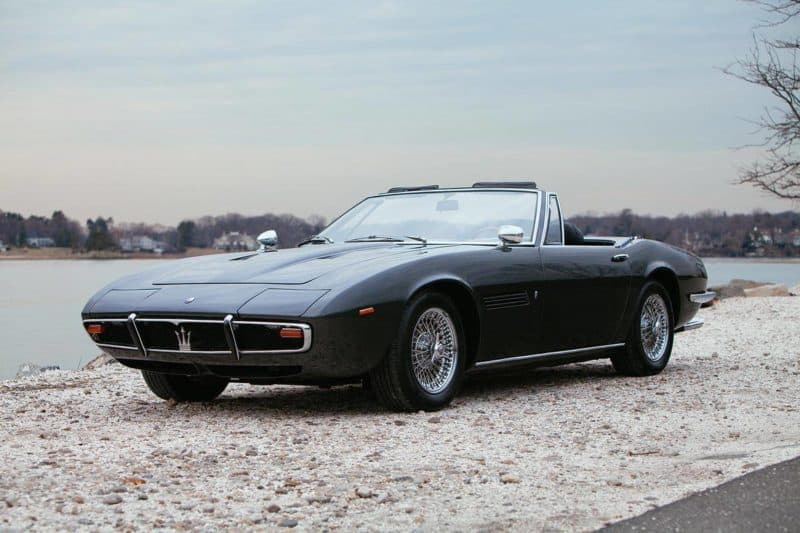
03. Pagani Zonda
It’s rare for the company’s first born to be an absolute success, but the immaculate Zonda managed to do that for Pagani. It survived 20 years on the market and went through a number of phases, but the Zonda nameplate will always be remembered as one of the automotive’s most daring stories of all time.
The Italian hypercar successfully competed with much more illustrious opponents, and despite the fact fewer than 150 units were ever produced, their exorbitant stickers allowed the company to finally field a successor Huayra in 2012 – parallel with Zonda’s production cycle.
Although unmistakably Italian, every Pagani Zonda has a German heart beating under the rear-mid section. A few initial models sported a 6.0L M120 V12 engine, while the remaining iterations all came with one of AMG-tuned Mercedes-Benz-sourced M297 V12s with displacements ranging between 6.9L and 7.3L. The most powerful of them was the 789-hp Zonda HP Barchetta but you may never know if that’s true given the vast number of one-off’s produced over the years.
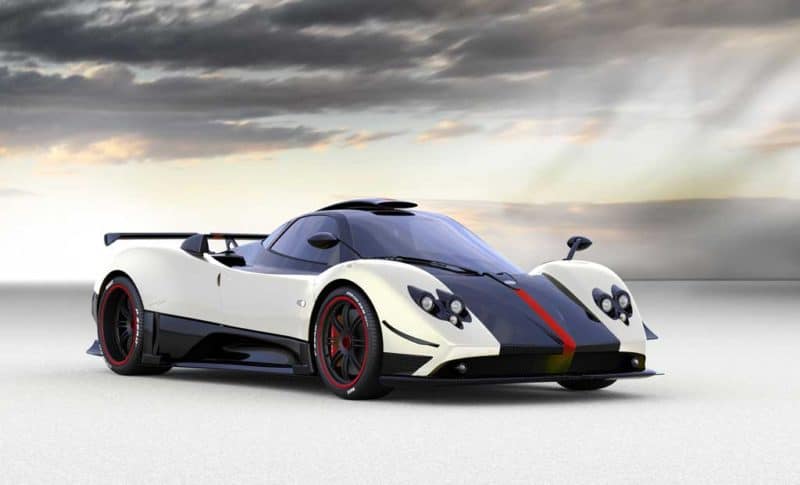
02. Ferrari F40
The beloved F40 is regarded one of the best Ferrari models ever created to this very day. Maybe the fact it was the last model in which the legendary automaker’s founder Enzo Ferrari was personally involved had something to do with that, but I’d say it’s the F40’s sheer stunning beauty, poise, and performance are to “blame.”
Thanks to its 477-horsepower 3.0L twin-turbo V8 engine, the F40 became the first production car capable of achieving the top speed that exceeded 200 mph. Most testers of the day, however, measured the top speed in a region between 196 and 199 mph. Regardless, the F40 would remain the fastest production car in the world until the Lamborghini Diablo arrived in 1990.
Between 1987 and 1992, Ferrari produced more than 1,300 units of their, arguably most popular car ever – most of which cost upwards of $1 million on the open market nowadays.

01. Lamborghini Miura
The Lambo Miura is arguably the most beautiful Italian supercar ever created and also one of the most coveted Italian cars of all times. A true revolutionary in its own right – the Miura became the first ever car with a transverse rear-mid engined layout and two seats inside a cab. Needless to say, this configuration will later become the “golden standard” in the supercar world.
The Miura was powered by a 3.9L V12 engine and came exclusively with a 5-speed stick for a gearbox. It developed 345 horsepower in its initial P400 form, 365 ponies in a latter P400 S models, and ultimately 380 horse in the last P400 SV form. Only the experimental P400 Jota made more (440 hp), but that doesn’t really count, does it?
Between 1966 and 1973, Lamborghini built 764 of these beauties and neither of surviving models can be obtained on cheap nowadays.
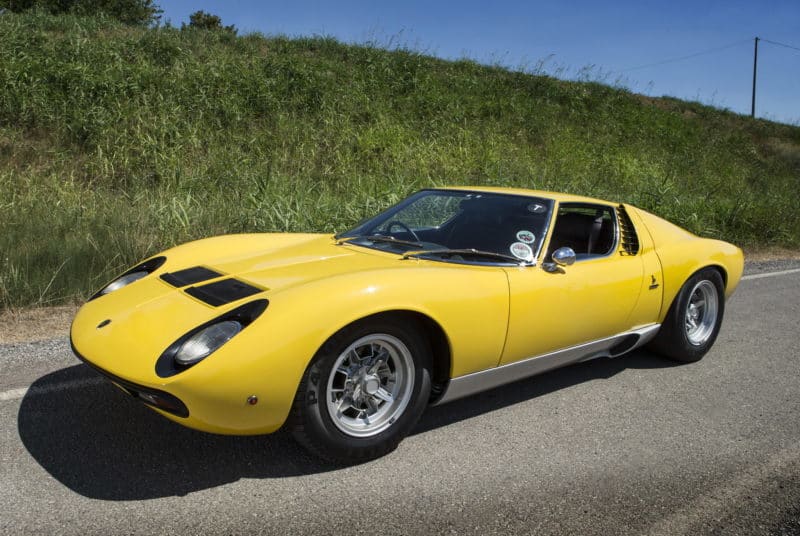
10 Cars With Italian Bodies and American V8s
Italian sports car manufacturers with resources, like Lamborghini and Ferrari, built their own engines (or use corporate engines). Smaller coachbuilders have a more limited choice. One upon a time, their best choice was the good old American V8.
Coachbuilding in Italy was a significant industry from the 1930s, paused for the war, and then from the 1950s through the 1970s. Even the major manufacturers like Ferrari would allow a customer to purchase a chassis with engine and running gear, so that they could take the underpinnings to a coachbuilder and have the exact body design they wanted fitted to the car (sometimes coming out a little, um, unusual).
With all this expertise in design and construction, smaller firms began building low-volume sports cars of their own. Unable to construct their own engines, and with Italian manufacturers disinterested in selling their engines to these upstarts, the small builders turned to American V8s. Cheap, plentiful, and reliable, these engines allowed a variety of interesting designs to come to life, and with their maintenance cost far below that of aFerrari or Lamborghini V12, have actually helped keep them on the road.
10. De Tomaso Pantera
Designed by American Tom Tjaarda (while he was working for Ghia) and launched at the NY Auto Show in 1970, the De Tomaso Pantera is the poster child for Italian sports cars fitted with American V8s.
A full monocoque chassis initially carried a Ford 351 cu in Cleveland, later to be replaced by a 351 cu in Windsor, and backed by a ZF gearbox. The Pantera became a cultural touchstone, subject of countless posters (with and without women), a work-over by the Ring Brothers, and one was even awarded to a Playboy Pet of the Year.
By the time everything was said and done, the Italian company (founded by the Argentine-born Alejandro de Tomaso) built 7,260 Panteras between 1971 and 1992.
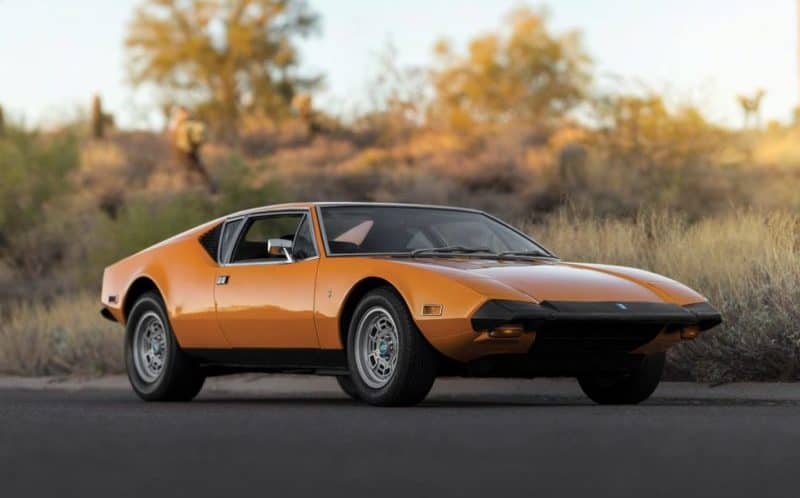
09. Iso Grifo
The Iso Grifo was manufactured by Iso Autoveicoli S.p.A. between 1965 and 1974. Intended to compete with Grand Touring cars from Ferrari and Maserati, it used a series of American engines. Styling was penned by Giorgetto Giugiaro at Bertone, and mechanicals the work of Giotto Bizzarrini.
The first production GL models appeared in 1965 and were sold with modified Chevrolet Corvette small-block 327 fitted to Borg-Warner 4-speed manual transmissions. With over 400 horsepower and a weight of less than 2,200 pounds, the Grifo was able to reach speeds higher than 170 mph.
In 1970 the Grifo Series II appeared, with sleeker styling and hide-away headlights, now fitted with a Chevrolet 454 big block. It was replaced in 1972 with the Grifo IR-8, which used a small-block Ford Boss 351 engine. This was the last Iso of any type, as the manufacturer shut down in 1974.
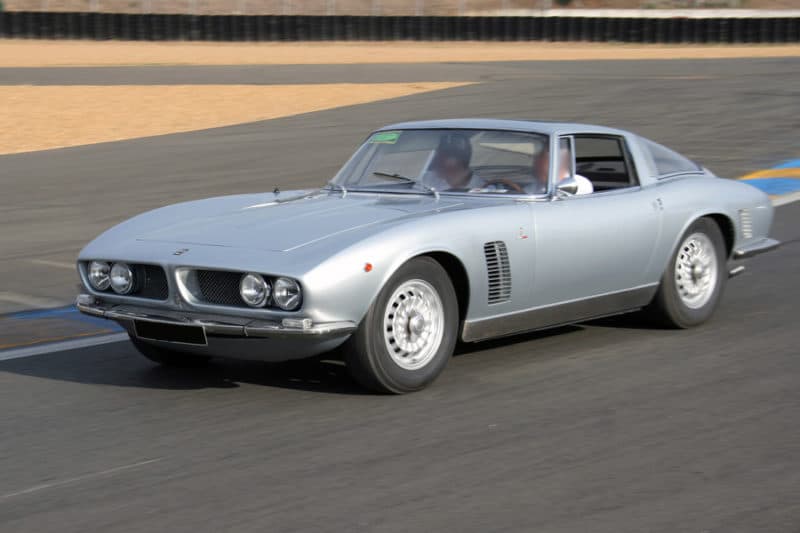
08. Bizzarrini Strada
Former Ferrari chief engineer Giotto Bizzarrini left the Modena marque to strike out on his own with racing and fast road driving machinery. The Strada was launched in 1965 and built on the welded monocoque platform of the Iso Rivolta 300 – also designed by Mr. Bizzarrini
The Strada was powered by a 365-hp Chevrolet 327 small-block Corvette engine for street use, and could be upgraded to 400 hp for competition. Drive went through a T-10 transmission to a limited-slip diff. Four wheel discs were used all around.
A total of 133 Stradas were built between 1965 and 1968 and are highly sought-after collectibles nowadays.
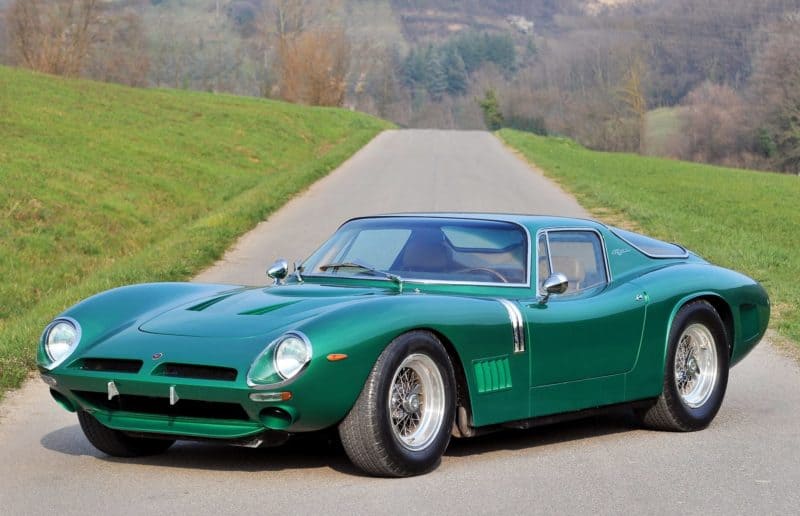
07. AMC AMX/3
While not designed in Italy, the AMX/3 was constructed there using an AMC V8 engine. The work of Dick Teague’s styling staff in Kenosha – the AMX/3 that was at first little more than a fiberglass shell when shown at the 1970 Chicago Auto Show.
American Motors placed an order for 30 operational cars with Giotto Bizzarrini, whose Turin facility hand made drivable mid-engined, steel bodied cars. Built on a 105.3-inch (2,675 mm) wheelbase, the Bizzarrini prototypes used the AMC 390 V8 and an Italian OTO Melara four-speed transaxle.
Five completed cars were produced before the $2 million program (over $12.5 million in today’s money) was cancelled. AMC needed to focus their attention elsewhere; the time for an AMX/3 car had passed. The remaining parts that remained in Italy were used to assemble a sixth car. To this day, the AMX/3 remains regarded as one of the best concept cars ever produced.
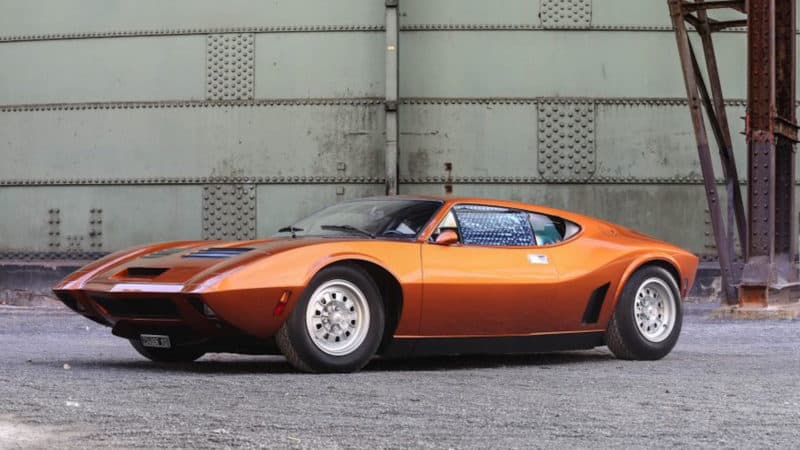
06. Scaglietti Corvette
Wealthy Texas oilman and road racer Gary Laughlin and his co-conspirators Jim Hall and Carroll Shelby enlisted the help of Chevrolet General Manager Ed Cole to build their dream sports car: Corvette underpinnings with an Italian body.
Three 1959 Corvette chassis were shipped without bodies to Scaglietti who would produce a small run of bodies for the Corvette. At the time, Scaglietti was busy turning out Ferrari’s Tour de France model. The Scaglietti Corvette would follow the lines of the Tour de France, adapted to fit the Corvette’s dimensions.
Upper management at GM caught wind of the project about the same time as Enzo Ferrari did, so the cars were quickly shipped back to the U.S.,only one having been completed in Italy. The other two were assembled in Houston.
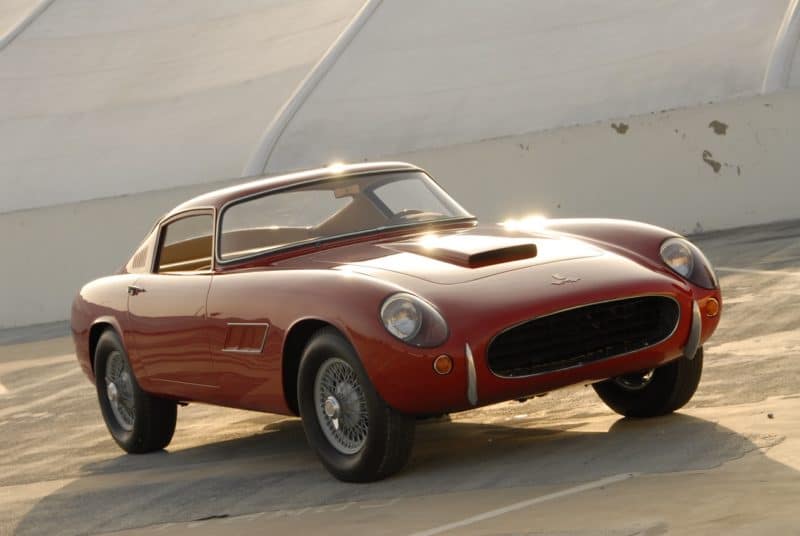
05. AC Frua
Now here’s a hybrid for you, and I don’t mean gasoline/electricity. The Frua was built on an already dated AC Cobra 427 Mark III chassis extended by 6 inches. The chassis was built at the AC works in England then shipped to Frua’s workshop in Italy where the body was fitted and then sent back to England to have the powertrain and trim added.
Engine was Ford’s 428 V8 backed by a four-speed Ford “toploader” transmission while a 3-speed auto came as an option. The cost was high and the cars could not be sold at a competitive price, and any potential buyers quickly learned they’d be fried by engine heat pouring in through the firewall.
Ultimately, 81 examples were made between 1965 and 1973 (49 coupes, 29 convertibles, and 3 special-bodied models).
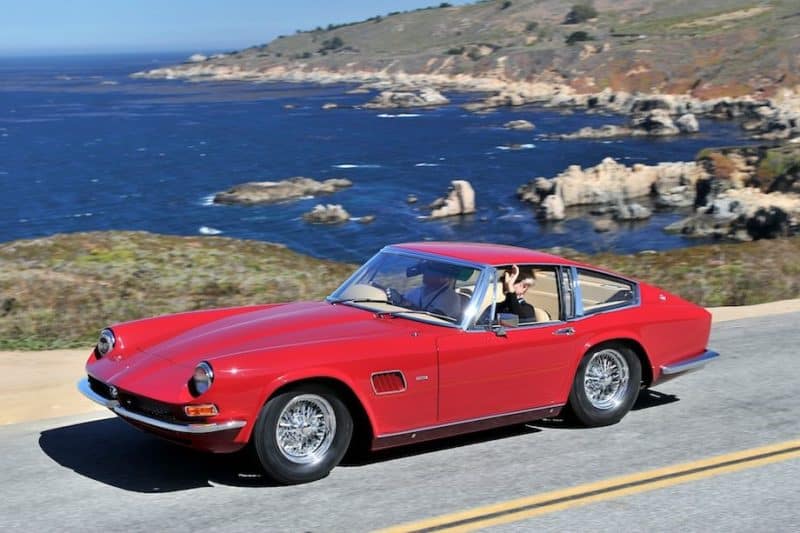
04. Pininfarnia Rondine Corvette
The only steel-body Corvette, the Rondine is the product of a long-running relationship between GM and Pininfarina to display a more European version of the Corvette for the 1963 Paris Auto Show.
The Rondine was designed by our old friend, American designer Tom Tjaarda while he was working at Pinninfarina, and powered by the Corvette engine of the day – fuel-injected 360 hp, 327 V8 backed by a 4-speed manual. The French weren’t impressed and the idea of a European ‘Vette ended with just a single car.
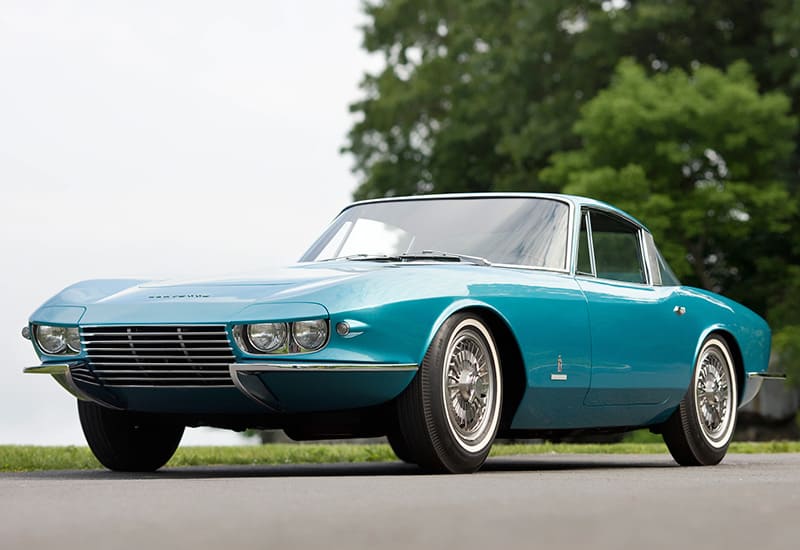
03. De Tomaso Mangusta
The fantastic-looking De Tomaso Mangusta suffered from a poor chassis design – a central backbone type as used by Lotus in lighter and less powerful cars. This impacted handling and as a result, sales. It was on the market for just four years and 401 units were sold before being replaced by the stiffer, much more successful Pantera.
Giugiaro designed the car, which can be recognized by its gullwing doors over the engine and luggage compartment. Power came from a 289 Ford V8 originally, and a 302 in later cars, driving through a 5-speed ZF transaxle. Other issues that limited the Mangusta’s lifespan were its tail-happy 32/68 weight distribution, flexible chassis, and a rather cramped interior (even for its class).
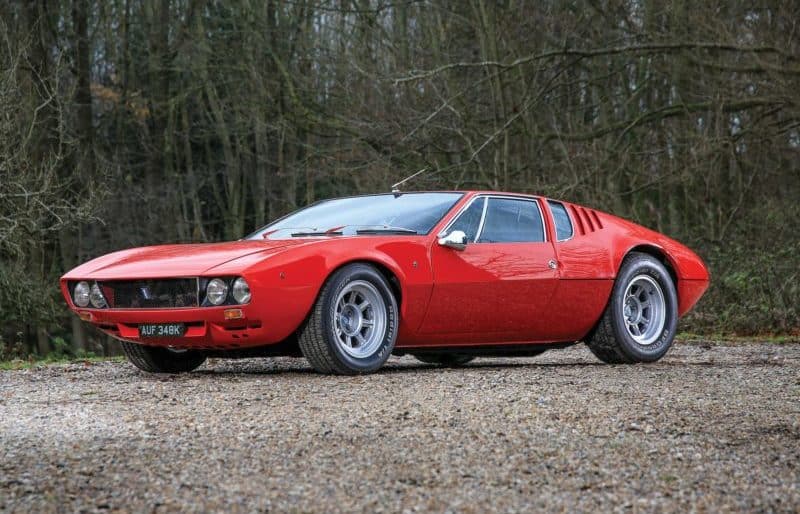
02. Momo Mirage 2+2
It sounded like a fine idea when real estate mogul Peter Kalikow partnered with ex-Briggs Cunnignham and current NYC Jaguar dealer Alfred Momo to build a four-seater GT for the American market to fill the gap between Ferrari and Rolls-Royce. Actually, I second what I just wrote.
Pietro Frua took the initial drawings, turned them into full designs, and executed in metal to fit over a chassis constructed by the race car manufacturer Stanguellini. The car was powered by a 350 Chevy V8 backed either by a GM three-speed automatic of a ZF five-speed manual.
The original plan to turn out 25 vehicles a year fell victim to the Italian partners (Fruan and Stanguellini) doubling their prices and an ailing U.S. economy. It was late 1971, after all. It is believed that five cars were constructed in 1972 – three of which remain in Peter Kalikow’s ownership.
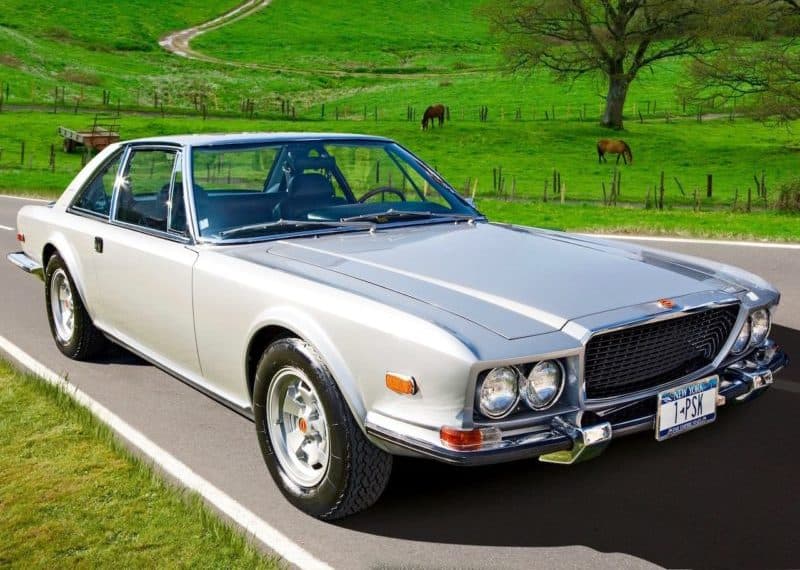
01. Monteverdi Hai 450
If you’re wondering what the connection between Italy, Switzerland, and U.S. is, here’s your answer. This immaculate late 1960s supercar debuted at the 1970 Geneva Auto Show and boasted Italian design penned by Trevor Fiore of Carrozzeria Fissore according to some or Pietro Frua according to others.
The name came from the German word for shark and car’s gross horsepower rating in Europe. The engine in question was none other than the famous 426 “Elephant” V8. Yes, the Monteverdi Hai 450 SS was Mopar-powered. Another prototype built in 1973 was called the 450 GTS and was powered by a 440 V8 and had almost 2 inches more in its wheelbase.
Although plans were to produce 49 units per year, the company would never offer them for sale. However, they would build two additional units from spare parts in the 1990s and these reside in the Monteverdi Museum in Basel-Binningen, Switzerland.
